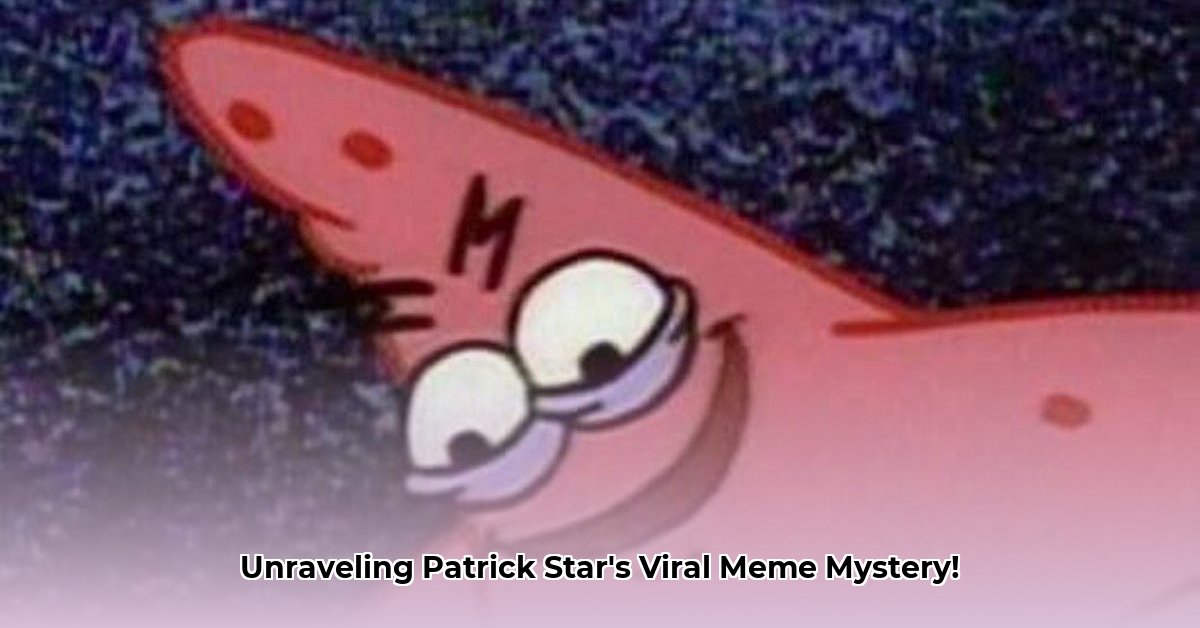
Patrick Another Meme: A Viral Trend Analysis
The internet's capacity for rapid memetic evolution is constantly on display. One moment, a seemingly innocuous image from SpongeBob SquarePants garners attention; the next, it's become a focal point in global political discourse. This is the story of the "Patrick another meme," specifically the iteration featuring the phrase "Another 20 Trillion to Israel." What began as fan art quickly transformed into a potent symbol within online conversations surrounding the recent conflict between Hamas and Israel and subsequent aid packages. This analysis delves into the meme's meteoric rise, its inherent ambiguities, and its broader implications for understanding the intersection of online culture and political debate. For more on viral trends and their impact, check out this resource.
The Unexpected Power of Ironic Humor
The "Patrick another meme's" effectiveness stems from its skillful juxtaposition of the typically jovial Patrick Star with the jarring statement, "Another 20 Trillion to Israel." This unexpected pairing generates a powerful and memorable impact. It allows users to express skepticism or criticism in a seemingly less confrontational manner, leveraging the power of satire to encapsulate complex geopolitical issues within a readily accessible format. The inherent irony creates a powerful hook, prompting engagement and furthering the meme's spread. But why does this specific form of ironic humor resonate so deeply with a global audience? Is its success attributable to its simplicity, or does it tap into something more profound about the way we process and react to information online?
Adaptability: A Meme's Secret Weapon
The longevity and widespread dissemination of the "Patrick another meme" are significantly attributed to its remarkable adaptability. The underlying image and text are easily modified, allowing for widespread recontextualization and repurposing across diverse online communities and platforms. This chameleon-like quality— its ability to seamlessly integrate into various digital ecosystems—is a crucial element in its enduring success. This adaptability distinguishes it from many other memes, propelling its virality and ensuring its relevance amidst evolving online conversations. What factors contribute to a meme's adaptability, and how does this quality impact its lifespan and reach?
The Double-Edged Sword: Ambiguity and Misinformation
While the meme's impact is undeniable, its inherent flexibility presents inherent risks. The very ambiguity that fuels its appeal also contributes to its potential for misuse and the spread of misinformation. Its open-ended nature allows for interpretations that align with diverse, and even diametrically opposed, viewpoints. This duality highlights the critical need for media literacy in the digital age. This inherent ambiguity— a double-edged sword—presents challenges in appropriately assessing its impact and mitigating its potential for misuse in the propagation of false narratives. How can we best navigate the complexities of memetic interpretation and mitigate the risk of misinformation?
The Role of Technology in Viral Spread
The meme's rapid proliferation is inextricably linked to the technological infrastructure facilitating its dissemination. Platforms like Imgflip, which simplify meme creation and sharing, acted as catalysts, exponentially increasing the meme's reach. Simultaneously, social media algorithms played a crucial role in shaping its visibility and influencing its trajectory. These technologies provide the fertile ground for memetic growth and evolution, acting as pivotal drivers in shaping the meme's narrative trajectory. How do algorithm design and platform dynamics influence the propagation of memes, both positive and negative?
Long-Term Effects: A Meme's Enduring Legacy?
The lasting influence of the "Patrick another meme" remains an open question. Will its resonance fade, or will it persist as a significant symbol in online political discourse? Its impact transcends its immediate context, underscoring the pervasive nature of memes in shaping perceptions and conversations surrounding complex global issues. Its enduring legacy serves as a valuable case study for future research into the dynamic interplay of internet culture and political engagement. Longitudinal studies are needed to assess its long-term impact on public opinion and broader political narratives.
Key Characteristics of the "Patrick Another Meme"
| Characteristic | Description |
|---|---|
| Origin | SpongeBob SquarePants fan art |
| Core Message | Commentary on international aid, specifically to Israel, often presented satirically |
| Key Visual | Patrick Star's generally happy expression contrasted with a serious or critical message |
| Method of Spread | Meme generators, social media, online forums, and image-sharing websites |
| Impact | Significant cultural resonance; provided a way for people to express complex feelings |
| Challenges | Potential for misrepresentation and the spread of misinformation |
This multifaceted analysis highlights the complex dynamics surrounding the "Patrick another meme," revealing how a seemingly simple online image can reflect and influence broader global conversations. It underscores the power and the potential pitfalls associated with memetic communication in the digital age.
How to Identify Misinformation Spread Using the "Another 20 Trillion to Israel" Meme
The "Another 20 Trillion to Israel" meme often serves as a vehicle for the dissemination of misinformation. Understanding its manipulative tactics is crucial for navigating the complex information landscape of the internet.
Decoding the Deception: A Step-by-Step Guide
Source Verification: Evaluate the credibility of the source sharing the meme. Reputable sources will generally cite their evidence transparently.
Independent Fact-Checking: Cross-reference claims using established fact-checking websites and reputable news organizations.
Contextual Analysis: Consider the broader context in which the meme is presented. Its placement within a political campaign or larger disinformation network significantly influences its potential for manipulation.
Numerical Scrutiny: Analyze the methodology behind the "$20 trillion" figure. Lack of transparency and verifiable supporting evidence is a significant red flag.
Visual Examination: Assess any accompanying visuals for signs of manipulation or misrepresentation.
Linguistic Analysis: Note the use of emotive or inflammatory language designed to provoke strong reactions and obscure the lack of substantiation.
This methodical approach helps discern factual reporting from misleading narratives, enabling informed critical engagement with the meme's circulating interpretations.